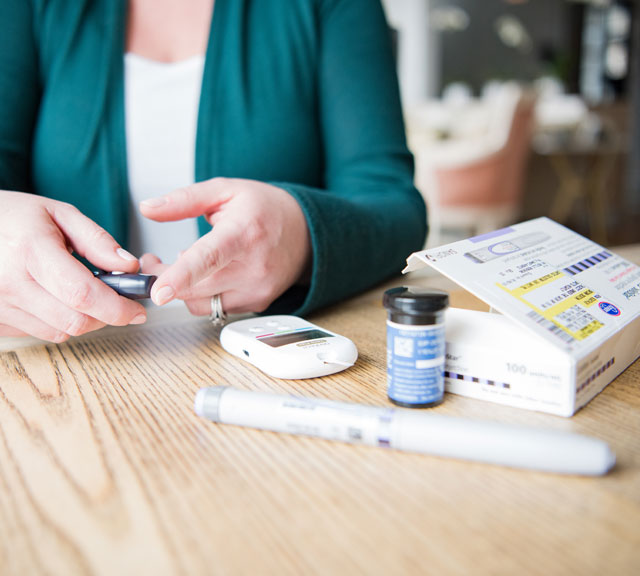What You Need to Know About Managing Your Diabetes with Insulin

Answer a few questions and we'll provide you with a list of primary care providers that best fit your needs.
If you’ve been diagnosed with diabetes, you may feel overwhelmed by a flood of information. Learn the best method to use insulin to keep your blood sugar levels within a healthy range, and put yourself back in control.
What Is Insulin?
Insulin is a hormone that is secreted by the pancreas. It helps our bodies use blood sugar, or glucose, for fuel. If you have diabetes, your doctor may prescribe insulin, either because your body does not produce any insulin (type 1 diabetes) or it does not use insulin properly (type 2 diabetes).
“The ability to have moment-by-moment control and increase the flexibility of one’s lifestyle are two major benefits that the pump provides,” says Miguel Parilo, MD.
How Does It Treat Diabetes?
According to the American Diabetes Association, there are more than 20 types of insulin sold in the U.S. They vary in how quickly they work, when they are at their strongest and how long they last. Insulin must be injected into the fat under your skin for it to get into your blood and help you use glucose for energy. Talk with your doctor about the right kind of insulin to suit your health needs and lifestyle.
Insulin Shots or Pump?
If you have type 2 diabetes, your health care provider may prescribe insulin to help your body use glucose effectively. Insulin must be delivered by a subcutaneous (under the skin) injection
There are two main ways to take insulin:

- Insulin shots. Most diabetics get their insulin through a long-lasting injection in the morning or several times during the day. You can give yourself a shot with a:
- Syringe: A syringe can be used to measure the amount needed. When using a syringe, gently pinch about an inch of skin, insert the needle and push in the plunger, pressing until the syringe is empty.
- Pen: With a prefilled “pen,” you click to select the right amount, and inject the insulin through a needle, similar to a syringe.
Using either method, you can inject insulin into the belly (where it is absorbed most quickly), the front of the thighs, the back of the upper arms and the upper buttocks.
- Insulin pump. An insulin pump is a small, computerized device that delivers insulin through a catheter (small tube) under your skin. You can wear the pump by attaching it to your clothing, or carry it in a special case. It provides a continuous flow of insulin to keep your glucose levels balanced between meals and overnight. You can also program the pump to deliver varying amounts of insulin at different times. Pumps act more like your own pancreas to keep your blood glucose within a healthy range.
A pump can offer real advantages over shots. “The ability to have moment-by-moment control and increase the flexibility of one’s lifestyle are two major benefits that the pump provides,” says Miguel Parilo, MD, Bull Family Diabetes Center.
But that doesn’t mean it’s for everyone. He adds, “The pump requires an added amount of diligence and interaction from the patient than injections. The user has to be motivated and willing to be in touch with their blood sugar levels several times throughout the day.”
In some cases, diabetes pills coupled with insulin shots, can help your body use insulin better.
There is also a type of inhaled insulin, but more research is needed to know if it is effective. Talk to your doctor about which method is best for you.
Answer a few questions and we'll provide you with a list of primary care providers that best fit your needs.
Source: American Diabetes Association; Miguel Parilo, MD, Bull Family Diabetes Center





